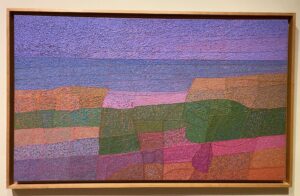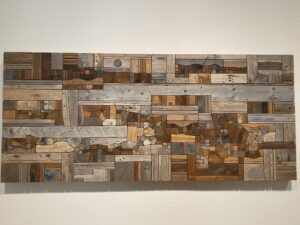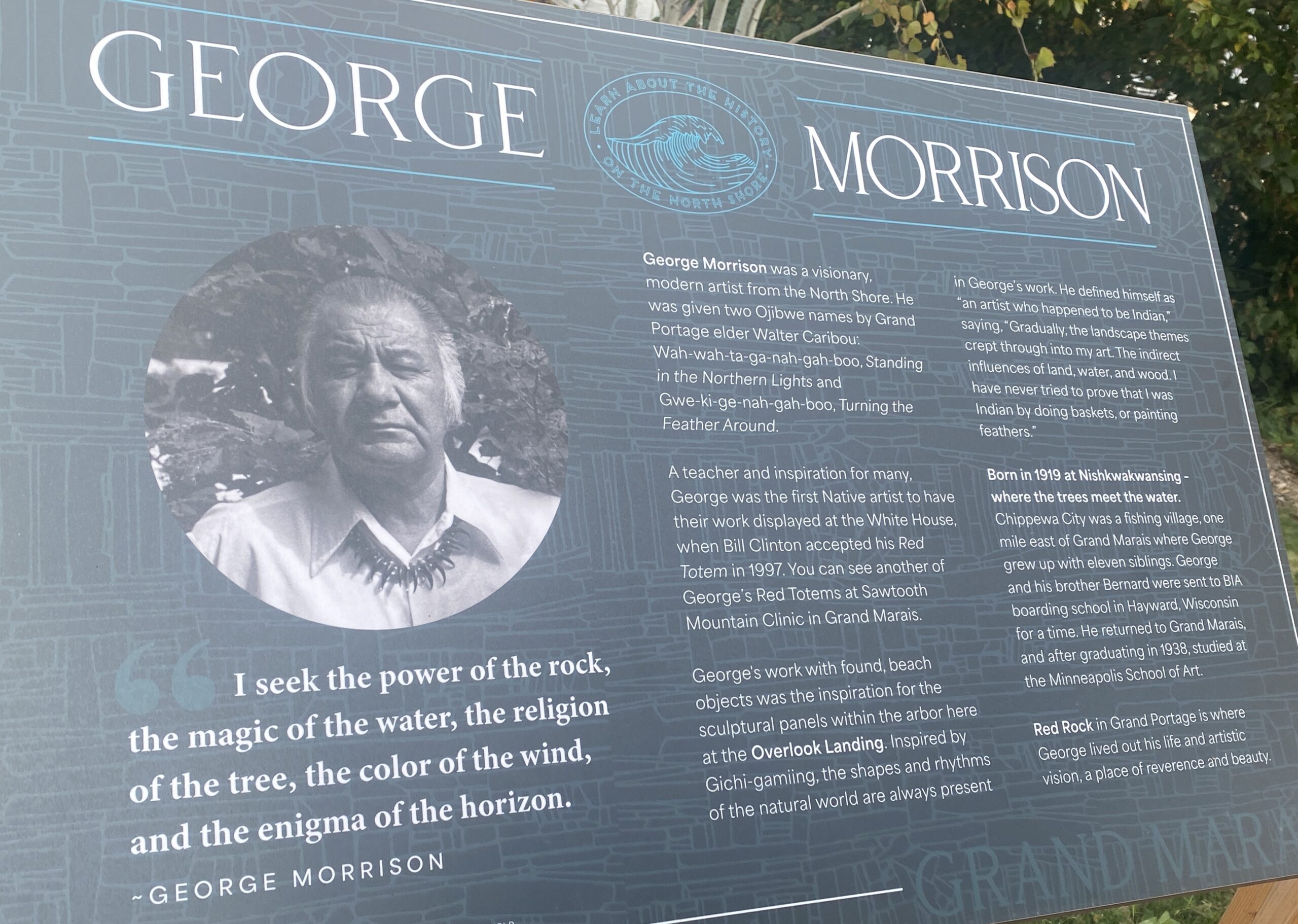On the edge of the world where sky and water meet and create a magical reflection, one of Minnesota’s most significant citizens was born. Called by his peers “Standing in the Northern Lights,” George Morrison is one of the first names that World Press Institute newcomers in the Twin Cities learn from locals. His significance for the community can be felt everywhere – from the diverse Twin Cities of Minneapolis and St. Paul to the remote and picturesque Grand Marais where the new group of fellows set foot a couple of days ago.
The reason for his prominence is he was distinguished artist whose work (“The Red Totem”) was featured at the White House. He was part of a leading generation of American artists working as abstract expressionists, and he also happened to be Native American. Three of his most spectacular pieces are exhibited at the Minneapolis Institute of Arts, where visitors can get additional information about him.
One of 12 children, Morrison was born in 1919 in the now-vanished town of Chippewa City (once inhabited by 100 Ojibwe families) near the Grand Portage Reservation along Lake Superior in northeastern Minnesota. He was Ojibwe in an era before Native Americans could vote or were even granted citizenship in the United States. He went to a boarding school in Wisconsin and graduated from the Minneapolis School of Art. In 1944, he earned a scholarship and moved to New York, where he made and showed work alongside modernist artists, such as Jackson Pollock, Willem de Kooning, Joan Mitchell, Robert Motherwell, Mark Rothko and Franz Kline.

George Morrison – Lake Superior Landscape, 1981; Photo: Ralitsa Ficheva
His path toward recognition wasn’t easy. In his early years, his art was not regarded “Indian” enough. He was rejected from a show of Native American art in 1947 for not appearing to represent his culture. Although he embraced his background, throughout most of his career, Morrison was concerned about being stereotyped as a Native American artist. However, this internal struggle resolved itself in 1970 when Morrison returned to St. Paul. Motivated by the desire of “putting certain Indian values into his work,” as he pointed out in his book “Turning the Feather Around: My Life in Art, he joined the faculty of the country’s first American Indian studies program at the University of Minnesota.
He bought a house on the shores of Lake Superior and reconnected with his Grand Portage community, while becoming an active member of the American Indian Movement (AIM). After the 1970s for the first time he allowed his work to be featured as Native American. Being close again to the waters of gichi-gami ( Great Sea) inspired Morrison to create some of his greatest works. He became mesmerized with the magical landscapes of Lake Superior, and the shapes and rhythms of the natural world.
“Gradually, the landscape’s themes crept through into my art,” Morrison once said, adding that his life and art were based on “on the power of the rock, the magic of the religion of the tree, the color of the wind and the enigma of the horizon”. His words still can be read on the panel that stands next to the Grand Marais Overlook Landing – a sculpture, honoring George Morrison.
One of his most powerful pieces is called “Untitled.” It is made of driftwood that he brought from the shores of Cape Cod and Lake Superior. He described it as “painting in wood,” explaining that the collage is “derived from nature, based on landscape.” “Driftwood gives a sense of history – wood that has a connection to earth, yet has come from the water,” Morrison wrote in his book.

George Morrison – Untitled, 1992; Photo: Ralitsa Ficheva
He died at age 80 in 2000. His work continues to be exhibited and evaluated. Some of them can be seen in the Minneapolis Institute of Art and The Walker Art Center in Minneapolis, as well as The Museum of the American Indian in New York, The National Gallery of Art in Washington.




